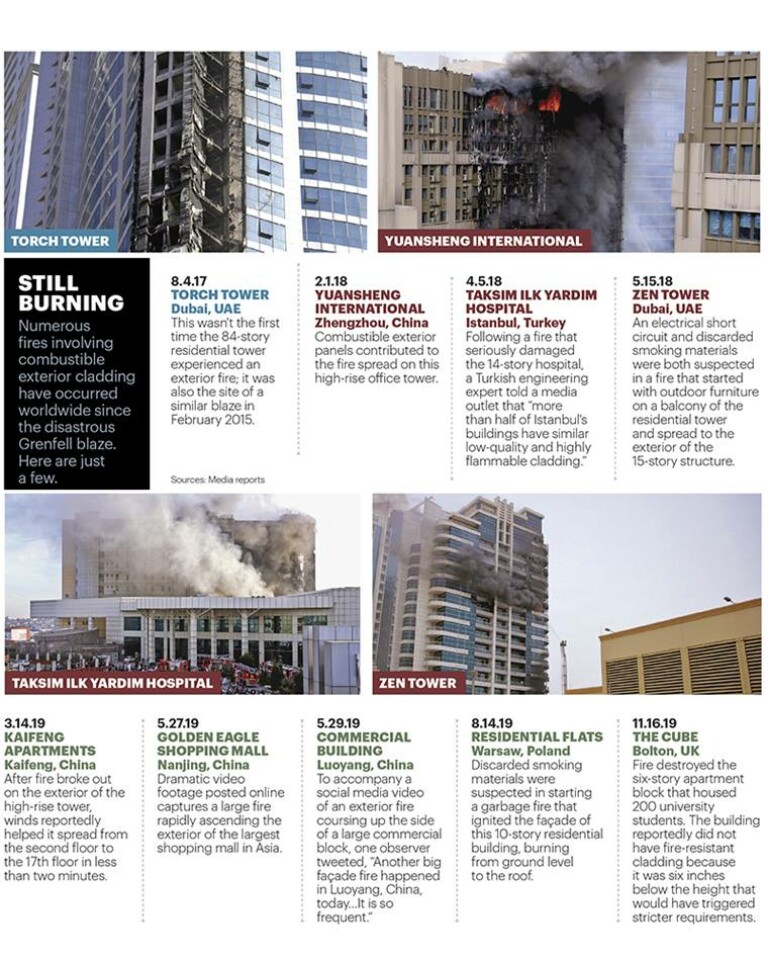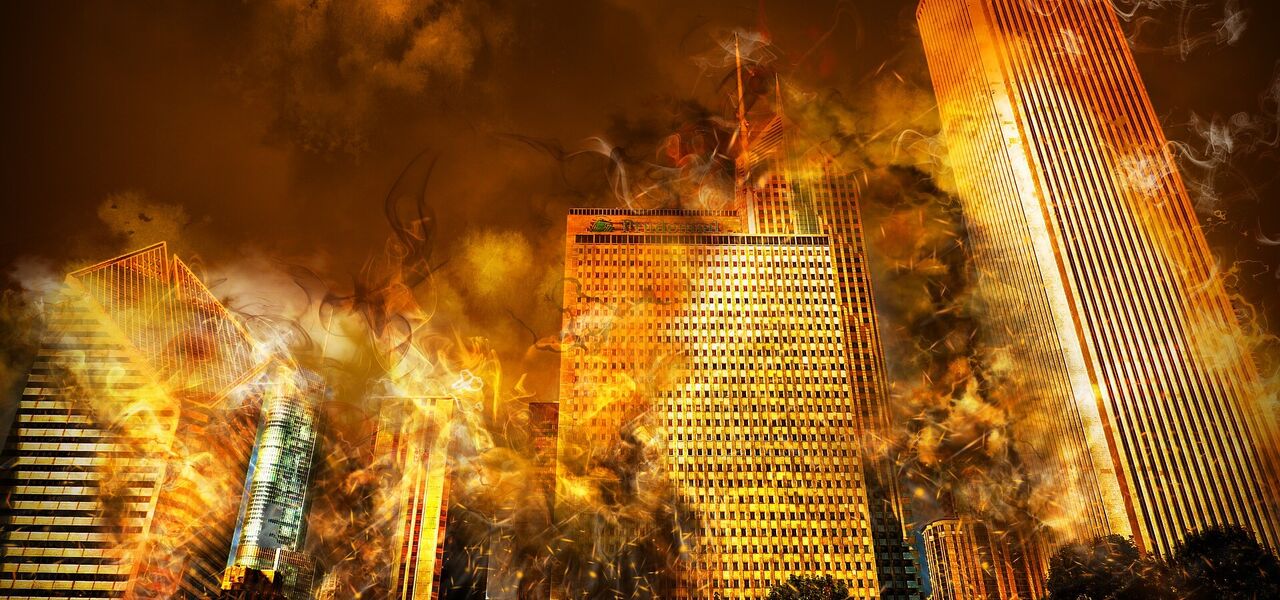

According to statistics, the number of façade fires around the world has risen by over 400% since the 90s. Accordingly, lots of EU countries started taking measures to update their regulations to fit that change. The main issue with that is the lack of a harmonised testing and documentation process for façade systems, across the European Union or even worldwide. Moreover, the regulations posed by those countries can vary immensely, which makes it even harder to keep up with for manufacturers, designers, and fire engineers alike.
A Complete System of Flaws
The problem at hand is one with several aspects to it, once you fix one you might end up adversely affecting the others. Flammable cladding or flammable façades is the result of a complete system formed of combustible assemblies, in which the cladding itself might even be non-combustible. Every single component of the system can be a problem in itself, ranging from plastic laden components in the covers or insulation materials into the structural system of the curtain walls and the mechanisms forming that. Studies have shown that even when fire retardants have been used on some of the parts, the flames can still build up at astonishing paces.
Higher Energy Efficiency and Sustainability?
What got us to that jam was mainly the blind international trend towards energy efficiency, a trend that perhaps did not fully understand all aspects of the decisions that were made. Those flammable cladding assemblies promised- and delivered – great aesthetics, easy assembly and maintenance, and high levels of energy efficiency, hence reduced costs for heating and cooling. Unfortunately, that came at the very high price of killing its occupants.
It keeps happening
In the middle of 2020, a video showing a 49-storey residential building in Sharjah UAE emerged. The video shows the whole façade of the building glowing with flames due to a fire that started in one of the flats. Massive balls of fire can be seen detaching from the façade and falling onto the streets, still fully flaming. Luckily, the fire resulted in no casualties but gave rise to a huge national campaign to remove all flammable cladding systems in the United Arab Emirates. Unfortunately, such promises have been largely made in cities around the world post Grenfell but have witnessed low levels of real follow-ups.
The Challenges
The process of locating, fully investigating, testing, and eventually replacing such systems come at major time and cost restraints, thus limiting the efficiency of such promises. As there is still no accurate or clear understanding as to how prevalent these systems are and the frequency of their usage around the world, this will remain a problem. On a positive note, The National Fire Protection Association (NFPA) have created a tool names EFFECT (External Façade Fire Evaluation and Comparison Tool). This tool can provide façade fire risk assessments which would in turn be used by building owners and managers to better understand and thus prioritize buildings with higher risks of façade fires.
Even though new projects are now obligated to have non combustible cladding in most countries, the removal of the existing ones in building stocks is the key challenge at the moment, with variable additional issues from one country to another. Funding remains the most prevalent and common one. Some countries have resorted to relaying the cost on the flat owners themselves while others are looking into providing public funds to aid with the substantial costs. The problem is that the matter at hand was realized way too late, after thousands of buildings were clad with flammable materials that could threaten the lives of its occupants at any given time. This will most definitely result in those fires occurring for many years to come.
Moving Forward
As the governments around the world are under the pressure of fixing the problem, rules and regulations are starting to be put in place. In the United Kingdom, the Grenfell Tower tragedy exposed serious issues and shortcomings across the whole system of building and managing high rise projects, especially residential ones. Dame Judith Hackitt was the leader of an independent review of building regulations and fire safety, a review that commenced on the 28th of July 2017, just a month after the fire. The review concluded with the need of a “universal shift in culture”, including fundamental changes in the whole system that governs the full life cycle of a building, from design to construction to occupation. This report has led to vital modifications in the regulations governing the construction business in the UK, especially focusing on cladding system requirements. The Building Safety Bill and the Fire Safety Bill will both have major amendments resulting from that report. The goal would be for people to be, and feel, safer in their homes. Those improvements have been deemed as the largest ones to building safety in a timeframe of around 40 years.
The question remains in the application of those legislations, and perhaps more importantly in how universalised they will eventually be. The world needs to adopt a global system of detecting, testing, and standardizing rules for fire safety. More importantly, occupants should not be held accountable for the negligence and greed of contractors and manufacturers. Responsibility needs to be placed where it actually belongs.
Om journalisten:
Amani er en libanesisk arkitektingeniør med en spesiell interesse for fagfeltet sikkerhet. Hun har også en Mastergrad i brannsikkerhet fra Høgskulen på Vestlandet (HVL), som hun var ferdig med i 2020. Hun har siden begynnelsen av 2021 jobbet som Graduate Fire Engineer ved Arup UK.

